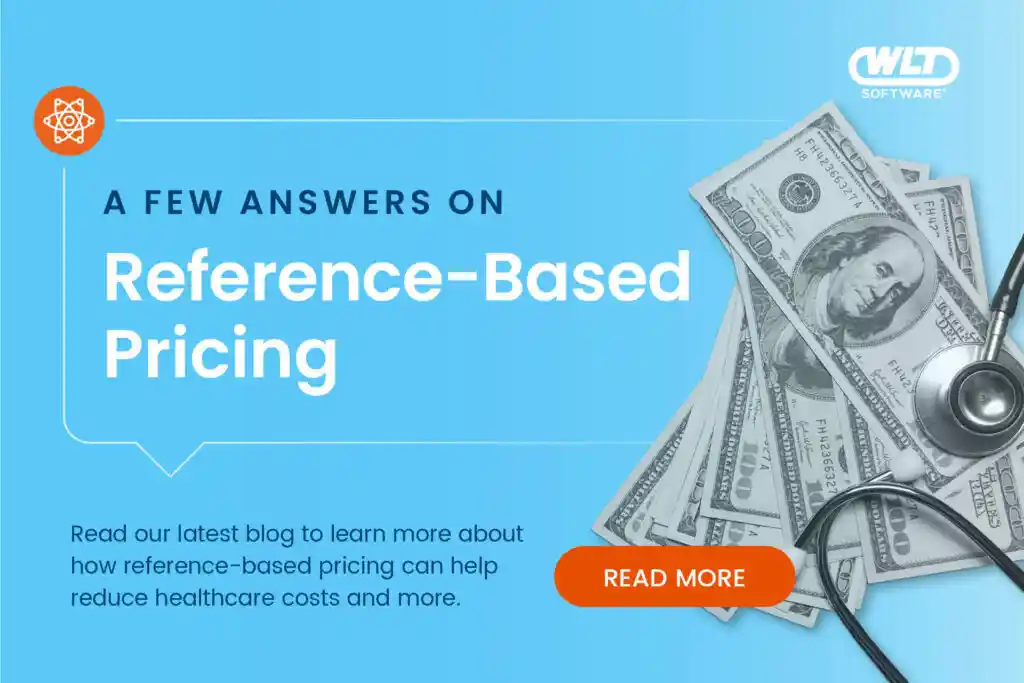The ConnXion – Volume 1, Issue 9
The world of healthcare insurance is many things, but simple isn’t one of them. From ever-changing compliance rules to the many layers of pricing, it’s never boring trying to keep up. By narrowing in on some common questions about reference-based pricing, WLT looks to bring a little clarity to the industry chaos.
What is it?
We’ll start with the obvious question—what exactly is reference-based pricing? As the name suggests, it serves as an alternative to traditional healthcare pricing. Instead of basing reimbursement rates for medical services on what the provider charges, reimbursement rates are based on a specific reference point. The goal is to use timely research and information to determine a price for medical services that is reasonable and fair.1
How does it work?
At the core, reference-based pricing is a cost-containment model. Under a provider network, traditional coverage is based on prices negotiated by a provider and payor, often based on markups from those providers and healthcare facilities. Reference-based pricing allows an employer to pay a set price for healthcare services with the support of a TPA or another vendor.2
The reference points are set by, as the name suggests, referencing a predetermined rate for a medical service. Some of these benchmarks are taken from organizations such as healthcare providers using their own cost data, third-party vendors, or self-insured employers with historical claims data. While the method for calculating reimbursement can vary from payor to payor, one common method is to calculate those rates as a percentage of the established benchmark.3
To use an example:
The reimbursement rate = the benchmark rate x percentage.
If the benchmark for a medical cost is set at $1000, and the reimbursement rate is set at 150% of the benchmark, the reimbursement rate is $1,500.4
What are the advantages?
One advantage of reference-based pricing is increased transparency, as it works directly to establish clear and consistent pricing for healthcare services and helps consumers better understand the costs of that care. Additionally, reference-based pricing can cut out-of-network fees, opening up a wider variety of healthcare options for employees.
The biggest advantage of reference-based pricing, however, is arguably the potential cost savings. By setting a fixed price point for medical services and thus advocating for a reasonably fair cost, it alleviates the overall cost of healthcare. Reference-based pricing is often found alongside self-funded health plans, allowing employers to keep a larger proportion of claims savings than they would under another plan.5
This could hit a bit of a wall if the provider did not accept the reimbursement rate set by reference-based pricing, in which case the employee would be billed the difference, called balanced billing. However, the No Surprises Act works directly to protect employees from just that, making it illegal for hospitals and providers to use balanced billing when it comes to emergency care. With that and additional levels of protection, the potential cost savings can far outweigh the risks.6
At WLT, we stay on top of the ever-changing healthcare and government regulations, so things are as simple as possible for you. With our exclusive and proprietary suite of services, we keep you connected to turnkey solutions that are comprehensive, proven, and future-facing. When it comes to reference-based pricing, our point solutions partner, Homestead, helps put the power back in the hands of the employer with transparent and sustainable health plans, saving clients around 20-30% on their healthcare spend.
Through our partnerships and services, WLT looks to keep you ahead of the game. We’re specially equipped to keep you on top of the No Surprises Act, so when it comes to its effect on reference-based pricing procedure, you’re never out of the loop—and you’re always protected and in compliance.
To learn more about how WLT’s partnership with Homestead can help you, check out our webinar: [webinar placeholder].
References:
- https://www.aha.org/fact-sheets/2021-06-08-fact-sheet-reference-based-pricing
- https://www.aha.org/fact-sheets/2021-06-08-fact-sheet-reference-based-pricing
- https://www.benefitnews.com/advisers/opinion/how-to-manage-reference-based-pricing
- https://www.sanabenefits.com/blog/what-is-reference-based-pricing/
- https://www.benefitspro.com/2022/06/13/reference-based-pricing-uneven-hospital-pricing-and-the-battle-against-inflation/
- https://www.shrm.org/resourcesandtools/hr-topics/benefits/pages/reference-based-pricing-lowers-health-plan-costs.aspx
